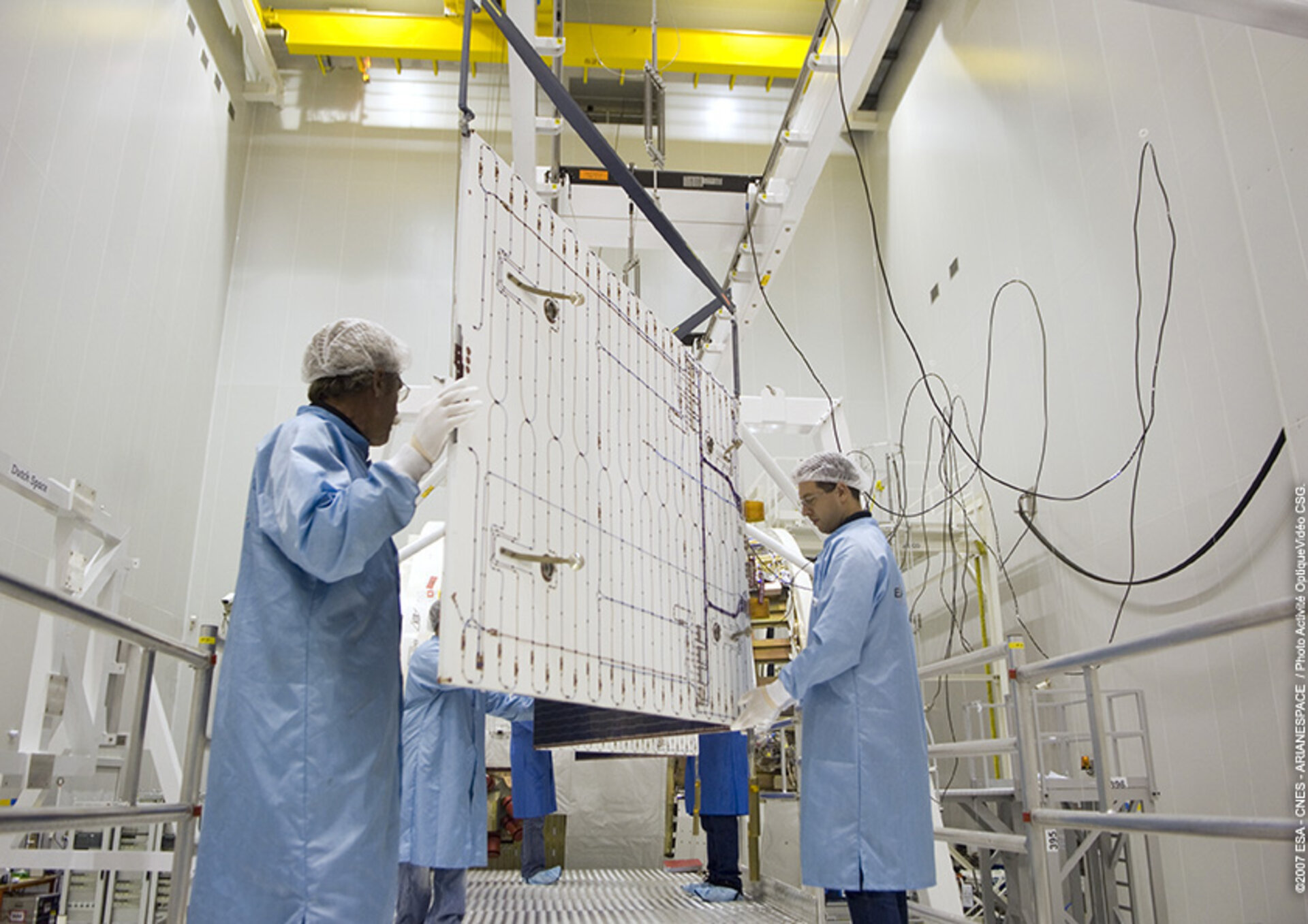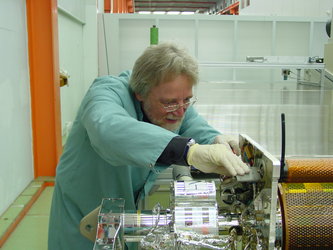Drinking in the Sun in space
The vast majority of satellites rely on solar power and ESA’s industry partners are constantly working to make more efficient solar cells. Technology has also been developed to make sure that each solar array in space is continually moved to maximise its exposure to the Sun, and to minimise the damage to the array by the extreme difference in temperature between the Sun and shade. The development of solar energy for space has also helped power generation on the ground.
The photovoltaic cell was invented in 1954 and the technology has evolved rapidly. The intention is to go on enlarging solar cell output efficiency to increase the functionality of satellites while also ensuring that the European space sector is competitive and not dependent on outside bodies.
Solar cells are made from the same kind of semiconductor materials as integrated circuits. Trace impurities are added to a semiconductor to alter its electrical properties – a process known as 'doping'. Differing doping ingredients are used on either side of a semiconductor junction to create an electrical potential. Incoming sunlight generates an electric current which then flows across the junction. Silicon was once the semiconductor of choice but it is increasingly supplanted by gallium arsenide (GaAs) –based semiconductors which reach higher power levels.
These allow the placing of multiple junctions on top of one another, each tuned to different segments of the overall light spectrum. Forming a single overall structure, these layers are stacked in series based on their sensitivity: the topmost junction reacts to highest-energy blue light while letting other light through; the middle layer absorbs medium-energy green light then the bottom layer makes its contribution from the remaining lowest-energy red light.
The resulting leap in efficiency from single to triple junction cells is on the order of ten percentage points, although designing and building them is hard. Designing the connections between cell junctions therefore requires a great deal of expertise and innovation but there’s a great payoff: through such design strategies, current solar cells on geostationary satellites still retain 88% of their original performance after 15 years resulting in an absolute end-of-life efficiency of 24.6%.

To minimise the harmful effects of space radiation – mainly energetic electrons and protons – all solar cells are covered by cover glass, typically just 100 micrometres (0.1 mm) thick. If a bare cell were exposed to the space environment it would degrade as much within a few days as a protected cell does in 15 years. All GaAs-based multi-junction cells are also vulnerable to so-called 'reverse voltage bias' – when part of the array is covered by shadow, as might occur during a manoeuvre or a particular orbital season then electric surges can damage the array. To guard against this, by-pass diodes need to be integrated into the solar cell.
If greater solar cell efficiency can be reached then smaller arrays could be flown, which would increase the satellite's working lifetime. Decreasing its surface area reduces the amount of attitude control manoeuvres required to compensate for the perturbing effects of solar radiation pressure.
The advances made in solar cells for powering spacecraft have had benefits on Earth too.
Multi-junction solar cells based on gallium arsenide have been adapted for use in terrestrial solar plants with concentrator systems to reflect and focus incoming sunlight. Today, they are in use in some 20 plants across four continents. They were adapted by Germany’s Fraunhofer Institute and Azur Space under ESA contract.
ESA's space solar cell research has also led to some surprising spin offs: one Agency partner, Azur Space Solar Power GmbH in Germany, has already applied the technology used to keep spacecraft powered beyond Mars to security keycard systems that can charge themselves using indoor light alone. ESA will continue to drive solar cell technology advances into the future, ensuring the competitiveness and independence of European industry.






